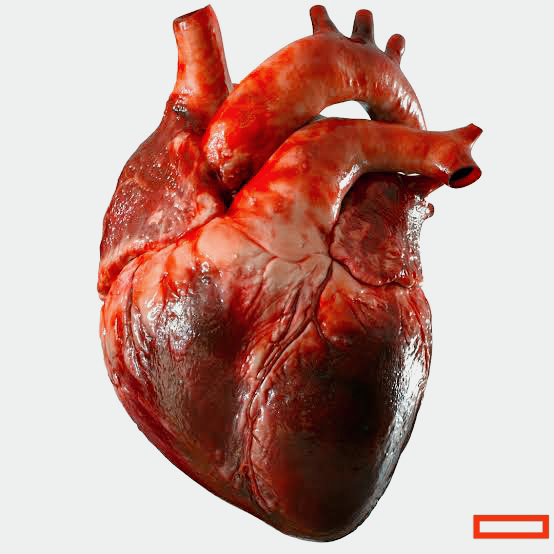Heart
Heart.
The heart is a crucial organ that is crucial to the body's circulatory system. It is in charge of transporting waste materials out of the body and pumping blood throughout the body, which contains nutrients and oxygen. In the centre of the chest, just slightly to the left, is where the heart is situated.
The heart's main characteristics are as follows:
Structure: The muscular heart is an organ that is about the size of a fist. Two atria (left and right) and two ventricles (left and right) make up its four chambers. Blood is drawn into the atria while being pumped out of the heart by the ventricles.
Blood Flow: The heart is supplied with oxygenated blood through an intricate web of blood arteries, which removes deoxygenated blood. The tricuspid valve separates the right atrium from the right ventricle as blood enters the heart through the superior and inferior vena cava, enters the right atrium, and then is pushed into the lungs via the pulmonary artery. The pulmonary veins carry oxygenated blood back to the heart, where it enters the left atrium, flows via the mitral valve into the left ventricle, and then is pumped through the aorta to the rest of the body.
Cardiac Cycle: The cardiac cycle is the name for the cyclic pattern in which the heart contracts and relaxes. Systole refers to the phase of contraction, whereas diastole refers to the phase of relaxation. These steps sync the filling and emptying of the chambers to maintain a steady blood flow.
The rhythmic sound that is made when the heart valves close during the cardiac cycle is known as the heartbeat. Adults' resting heart rates typically range from 60 to 100 beats per minute, but they might change depending on things like physical activity, emotional state, and general health.
Heart diseases are a collection of illnesses that have an impact on the anatomy and operation of the heart. Coronary artery disease, heart failure, arrhythmias, and valvular heart illnesses are a few examples of prevalent heart conditions. High blood pressure, high cholesterol, smoking, being obese, having diabetes, and leading a sedentary lifestyle are all risk factors for heart disease.
Adopting a healthy lifestyle is essential for keeping your heart in good condition. This includes regulating stress levels, engaging in regular physical activity, eating a balanced diet high in fruits, vegetables, and whole grains, abstaining from smoking, and consuming excessive amounts of alcohol.
Functions of the Heart .
The heart serves the body in a number of crucial ways. The heart performs the following essential tasks:
Blood Pumping: The heart's main job is to circulate blood throughout the body. It takes deoxygenated blood from the body's tissues and pumps it to the lungs, where it is oxygenated, before taking oxygenated blood from the lungs and pumping it into the left atrium. The aorta is then used by the heart to circulate this oxygen-rich blood throughout the body.
Circulation:
The heart keeps the blood flowing to all regions of the body in order to maintain circulation. In order to move blood through arteries, capillaries, and veins and reach the body's tissues and organs with oxygen and nutrition, it generates the pressure required.
Supply of Oxygen and Nutrients: The heart is essential for providing all body cells with oxygen and nutrients. For cellular respiration, the process that generates energy for cell function, oxygen is essential. The blood also carries nutrients to the cells for numerous metabolic activities, including amino acids and glucose.
Waste Removal: The heart assists in the removal of waste from the body. Deoxygenated blood that contains waste products like carbon dioxide is pumped from the heart to the lungs, where oxygen is supplied and carbon dioxide is expelled.
Transport of Hormones and Enzymes: The heart moves hormones and enzymes around the body. Enzymes are essential for biological activities, while hormones are chemical messengers that control a variety of body functions. These vital compounds are delivered to their intended organs and tissues through the circulatory system, which is assisted by the heart.
Temperature Control: The heart helps to regulate body temperature. Thermal control is aided by the distribution of heat produced by metabolic activities as blood circulates throughout the body.
Support for immunological Response: The heart is involved in the immunological response as well. It circulates immune cells and antibodies throughout the body to assist the body's defence mechanisms and aid in the fight against diseases and pathogens.
Thankyou😊
zeeshanfayazlone@


Comments
Post a Comment